Tree fertilization is a very important process in arboriculture as it directly affects the health, growth and longevity of trees. This extensive article explores different types of fertilizers available, their specific advantages and how to apply them so that the trees will be healthy properly. We shall also consider essential nutrients needed by various tree species, conduct soil testing to determine nutrient deficiencies and understand environmental factors that affect fertilizer requirements. Moreover, this guide will provide insight on whether one should use organic or synthetic fertilizers, slow-release versus quick-release options and guidelines for adapting applications on seasonal or developmental stages in trees. Whether you are an experienced professional tree surgeon or just a dedicated horticulturist at home, this document provides information that can help decide about tree fertilization towards robust and sustainable growth.
What is the Best Fertilizer for Various Trees Types?
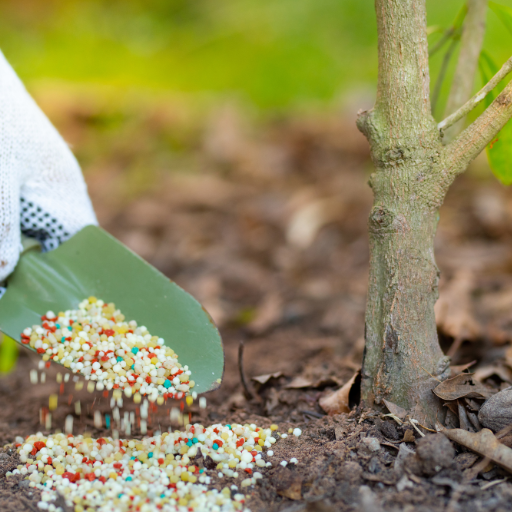
The best fertilizer for different tree species depends on many things, including the particular nutrient needs of the type of tree, the composition of the soil, and environmental conditions. Deciduous trees like maples and oaks generally respond well to a 10-10-10 balanced fertilizer, which has equal parts of nitrogen (N), phosphorus (P), and potassium (K). Coniferous trees such as pines and spruces usually need fertilizers with high amounts of nitrogen, for instance,16-4-8 to facilitate needle growth There is a need for fruit-bearing trees such as apple or cherry trees to be fed with phosphorous rich fertilizers which are crucial in flowering and fruiting at a ratio of 5-10-10.Farmers must carry out soil testing to know what amount of nutrients are present in it.
Organic options such as compost or well-rotted manure can provide a slow-release supply of essential nutrients while improving soil structure and microbial activity, making them suitable for several kinds of trees.
The Significance Of Fertilizer In Tree Growth
Fertilizer is essential in tree growth by providing additional nutrients that may not be available in the soil. Trees require macronutrients such as nitrogen (N), phosphorous (P) and potassium(K) in balanced form, but they also need micronutrients like iron(I), manganese(Mn) and zinc(Zn). Nitrogen is very important during vegetation process where it’s required by leaves development. Phosphorous assists root system in expanding while potassium enhances overall plant healthiness through disease resistance.
To find out the best fertilizer for your trees, you must do a soil test. Soil tests provide detailed information about nutrient deficiencies and pH levels which are vital when applying fertilizers correctly. For example, after conducting a soil test you may discover that your soil lacks nitrogen but contains enough phosphorus and potassium. Here, you may consider fertilizing with a high-nitrogen fertilizer (for example, 16-4-8).
Technical parameters to consider:
- pH Level: Most trees will grow well in soil with a pH range of 6.0 to 7.0, therefore you should adjust your soil’s pH depending on test results.
- Nutrient Content: Use fertilizers with the correct N-P-K ratios according to the tree’s specific needs; for instance, deciduous trees may require a 10-10-10 combination, whereas coniferous ones might do better with a 16-4-8 combination.
- Application Rate: Follow the manufacturer’s recommendations for application rates. Over-fertilization can lead to nutrient runoff and environmental harm, while under-fertilization can stunt tree growth.
To sum up, the careful choice and use of fertilizers based on the analysis of soil tests customised for different tree species contribute immensely to ensuring strong and sustainable tree growth.
Choosing Tree Fertilizer for Different Species
When choosing fertilizers for diverse types of trees, it is essential to consider the nutrient needs and growth habits specific to each species. For example, fruit trees need more phosphorus and potassium to enable them develop fruits. In contrast, evergreen trees might require high levels of nitrogen that can sustain their leaves throughout the year.
- Fruit Trees (e.g., apple, citrus):
- Nutrient Content: Use a balanced fertilizer with more phosphorus and potassium such as 10-10-10 or 5-10-10.
- Application Rate: Apply fertilizer in early spring or mid-summer, depending on the tree’s age and stage of growth.
- Deciduous Trees (e.g., oak, maple):
- Nutrient Content: It is advisable to apply balanced fertilizers like 10-10-10 mix that supports both root and foliage development.
- Application Rate: Apply once in early spring as recommended by the manufacturer.
- Evergreen Trees (e.g., pine, spruce):
- Nutrient Content: Select higher nitrogen formulas like 16-4-8 mix to support year-round foliage.
- Application Rate: Fertilize in early spring for cold weather preparation again during fall season in readiness for winter chilliness.
Technical Parameters:
- pH Level: The aim should be soil pH maintenance that falls between 6.0and7.0 for optimal nutrient uptake.
- Micronutrient Inclusion: Ensure soils have appropriate levels of important micronutrients like iron and zinc especially when they are deficient in the same.
- Organic vs. Synthetic Consider organic fertilizers because they promote long-term soil health and reduced environmental impact while synthetic options may lead to faster results though only short term benefits are attained from applying these kind of fertilizers into the fields
Examining these species-specific requirements alongside technical parameters will help individuals make good choices regarding suitable fertilizers and methods of application, thus encouraging sound tree growth practices that can be maintained in the long run.
Understanding the Role of Nutrients in Fertilization
Nutrients are essential during fertilization because they support different physiological processes needed for tree growth and health. Principally, macronutrients such as nitrogen (N), phosphorus (P), and potassium (K) should be taken care of. Nitrogen is responsible for leaf development and general growth, whereas phosphorus enhances root development and flowering. Potassium boosts resistance to diseases and improves overall welfare.
- Balanced Fertilization:
- Nutrient Ratios: Balance of N-P-K is maintained depending on tree type and stage of growth.
- pH Level: Optimum nutrient availability will be obtained when the soil pH is kept between 6.0 and 7.0.
- Micronutrient Inclusion:
- Essential Micronutrients: For instance, iron (Fe) and zinc (Zn) are micronutrients to prevent deficiencies that may cause ill health to trees.
- Soil Testing: Regularly testing the soil can determine the content of these nutrients in it and other fertilizing strategies made to fit them accordingly.
- Organic vs. Synthetic Fertilizers:
- Organic Fertilizers: Soils are managed sustainably by using organic fertilizers to maintain soil health and reduce environmental impact.
- Synthetic Fertilizers: However, synthetic fertilizers promote a faster release of nutrients into the soil for immediate results.
- Specific Tree Requirements:
- Fruit Trees: Higher phosphorus and potassium levels (e.g., 10-10-10 or 5-10-10) support fruiting.
- Deciduous Trees: Balanced N-P-K ratios (e.g., 10-10-10) cater for overall growth.
- Evergreen Trees: They have higher nitrogen concentration (e.g., 16-4-8), which sustains leafage all year round.
Meticulous management of these nutrient parameters while adjusting them based on specific plant needs allows applying fertilizers to foster vigorous and healthy tree growth.
What Types of Fertilizers are Available, and Which is Best for Trees?
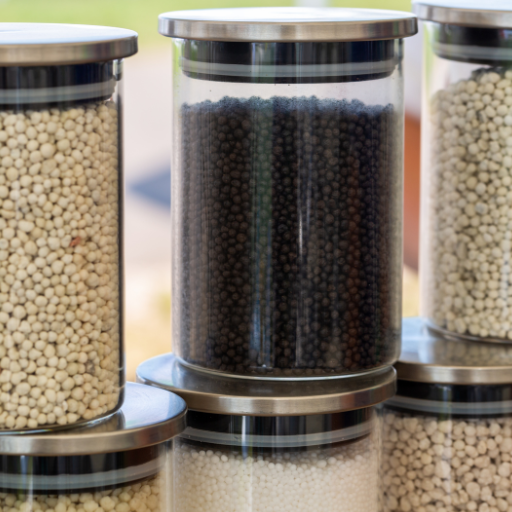
When considering the proper fertilizer for trees, it is important to consider both the type of tree and the specific needs of the soil. Fertilizers usually come in three main categories: organic, synthetic, and slow-release.
Organic fertilizers are derived from natural sources such as compost, manure, or bone meal. They release nutrients slowly to promote long-term soil health and microbial activity. These are ideal where sustainability is a goal and gradual improvement of soil structure is desired.
On the other hand, synthetic fertilizers are made up of chemical compounds and contain an exact nutrient balance designed to be released quickly into plants. They could alleviate immediate nutrient deficiencies and bring about fast growth but do not necessarily enhance soil health in the long run.
Finally, slow-release fertilizers are either organic or coated synthetic fertilizers that gradually release nutrients over a period of time. This means they can supply consistent nutrients without having to be applied frequently since there is less risk for over-fertilization or nutrient runoff.
In conclusion, while quick results can be provided by synthetic ones but for long-term soil health purposes it would be beneficial to use organic ones. Slow-release ones, on the other hand, provide steady nutrients with reduced maintenance, meaning that they combine the advantages offered by both types. The species of trees grown in a particular area, soil conditions present, and peculiarities required for their development determine the choice here.
Liquid vs Granular Fertilizer
These physical forms and modes used to deliver these nutrients contribute to their nature as liquid or granular, thereby serving different roles.
Liquid Fertilizers are solutions having nutrients readily dissolved in water hence making them available immediately after application. Liquid fertilizer may be applied directly on the ground surface or foliar fed which means spraying onto leaves for faster uptake by plants utilizing roots only for water absorption purposes. For instance, liquid manner provides an opportunity to quickly correct nutritional imbalances, resulting in accurate ratios of elements required for fertility restoration. Typical technical parameters include nutrient ratio (e.g., 20-20-20 for nitrogen, phosphorous and potassium), solubility in water, and quick release profile that requires frequent application to sustain nutrient levels.
Granular fertilizers are available in pellets or granules; they are spread over the soil surface where they depend on moisture for breakdown and nutrient releasing. Granular fertilizers are mainly used as they slowly release nutrients over a longer period of time. This avoids the risk of excessive fertility through improved efficiency. Major characteristics of granulated ones involve their nutrient composition (for example 10-10-10 NPK) slow or fast release devices (e.g., coated, non-coated), and particle size which affects the rate of nutrient depletion as well as ease of usage.
To summarize, when it comes to choosing between liquid and granular fertilizers, one should have a specific aim concerning what nutrients one wants to get rid of. Fast, targeted nutrition applications work perfectly with liquid fertilizers, while granular ones ensure that there is a continuous supply, which limits regular use and hence has long-term benefits.
Organic vs Synthetic Fertilizer
They come from natural sources like plants or animals and are processed minimally. They enhance soil structure, increase microbial activity, and decompose slowly to deliver nutrients. Common examples include composts, manures, bone meals and seaweed extracts. Technical specifications for organic fertilizers often involve such things as content ratios (e.g., 5-3-4 for nitrogen-phosphorus-potassium), decomposition rates coupled with availability of nutrients depending on both the organic material itself plus prevailing conditions at this particular time.Organic options tend to have lower concentrations than synthetic alternatives hence would need larger quantities applied before desired levels can be achieved.
By comparison with synthetic ones,organic fertilizers enhance the soil structure and microbial activities which supports the argument of lower nutrient concentrations and slow release rates. For example, many organic fertilizer compounds provide a wide range of nutrients that plants need, all in one product. These include Nitrogen(N), Phosphorus(P),Potassium(K), and other microelements like copper (cu), zinc(Zn), etc. In particular; they are popular with biological farmers as they are naturally occurring sources of nutrients.
In a nutshell organic fertilizers build up natural soil fertility by providing plant available nutrients over a long period though at a slower release rate. On the other hand, synthetic fertilizers provide precise and immediate nutrient availability but may pose risks to soil health and the environment if not managed carefully. Whether to use organic or synthetic fertilizers should be guided by specific agronomic objectives, field conditions and ecological concerns.
Comparison between Slow Release Fertilizer and Soluble Fertilizer
The slow-release fertilizers are designed to work in similarity to natural feeding patterns of plants, slowly releasing their contained minerals over an extended time frame. Manufacturers usually coat these types of fertilizers with polymers or sulfur so that they regulate how nutrients are released from them–the longer it takes for them to decompose after absorption into the soil; hence more prolonged is the mineral nutrition supply provided by this kind of fertilizer. Important features for slow-release fertilizers are a time of release (it can be in months or even years) as well as coating material used, i.e., resin-coating versus sulfur-coating respectively, which may depend on environmental conditions such as temperature or moisture level.
In contrast to soluble ones,soluble fertilizers dissolve immediately upon contact with water making available their contained nutrients instantaneously. It could also be advantageous in cases when rapid plant response is required e.g., during high nutrient demand periods or stress recovery situations. Primary technical parameters for water soluble fertilizers include nutrient solubility and salt index, which measures a fertilizer’s potential to increase soil salinity. They have high solubility that allows them to be used through irrigation systems (fertigation), but this also causes leaching and runoff of nutrients especially in situations where they are applied more than required.
In summary, the decision between slow-release and soluble fertilizers must consider crop needs, site conditions, and management practices. Slow-release fertilisers provide sustained nutrient release with lower environmental effects, while soluble ones provide an instant supply of nutrients but need careful application so as not to pollute the environment negatively.
When is the best time to fertilize trees?
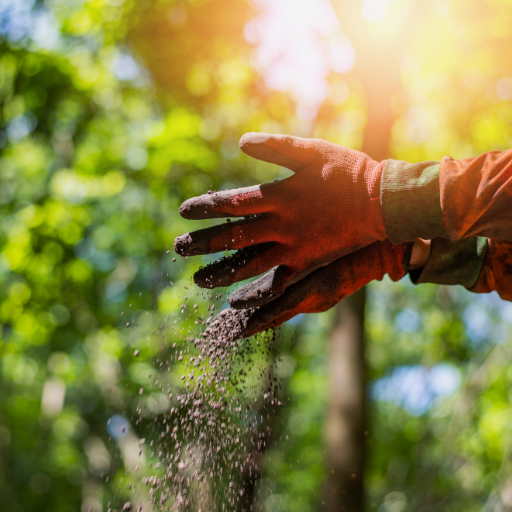
The best time to fertilize trees is usually in early spring before new growth starts which enhances nutrient uptake during the growing season. Mid to late fall after the trees have become dormant can also be a good period for fertilization as it allows for nutrients to be absorbed and stored for spring use. Do not apply fertilizer in summer because this leads to excessive tender growth that is susceptible to pests and diseases. The exact timing may vary depending on the species of tree, soil type, and local climate; therefore, these must be taken into account for optimal results.
Optimal Times of Fertilizing: Early Spring And Fall
For instance, early spring prior to onset of new growth is preferred when trees are fertilized as it supports the almost instantaneous spurt into height. By doing this, such timing guarantees that during times of most need there would always be enough food available in trees at all times. As well, mid-to-late autumn period is preferable since it ensures the storage of nutrients by one year old plants so that they could be used next year (spring). These periods both capitalize on seasonal tree cycles relieving strain and promoting healthy development. In addition, it should be noted that summer months must not involve any fertilizations since all this may lead to sprouting weakly developed tissues and thus make plants vulnerable to diseases attacks and invasions by other pests. Always remember about specific types of plants being dealt with; while planning how often do you want them to receive additional feeding take into account whether temperatures are too high or even low then choose when appropriate.
Tree Health Varies Throughout The Seasons
Factors affecting tree health through different seasons aim at knowing what kind of requirements/ stresses confront them within a span of twelve months as well as their annual life cycle stages. For example, during spring inspect winter damage & administer slow release fertilizers for new shoots’ support. Moreover, watering properly and mulching against pests/ diseases will constitute summer care. In fall, keep watering but reduce the amount of fertilizer to prevent new growth from being stimulated before winter arrives. Finally, pruning is advised in late autumn when trees are dormant so that the risk of infection by diseases can be minimized. Furthermore, one should shield vulnerable and young trees from harsh weather by wrapping them using burlap while ensuring adequate soil moisture levels during winters. Every particular season brings about different expectations and difficulties making it vital to adapt tree care practices as per required maintenance necessary for an overall healthy state and vigor retention.
How to Apply Fertilizer to Trees Properly?
For trees to be properly fertilized, several steps must be followed. The first step is important because soils should be tested in order to identify the tree’s specific nutrient requirements. From the results of these tests, a balanced tree fertilizer with correct N-P-K (Nitrogen phosphorus-potassium) will be chosen. Around the outer edge of the branches, where most of the root activity happens, called the drip line, is where the fertilizer should be applied evenly on the basis of this. For granular fertilizers, spread them over this area and lightly water them so that nutrients can penetrate into the soil. In case liquid fertilizers are used dilution and application rates will have to follow manufacturer’s directions. Do not put fertilizer against the trunk as it might cause root burn and other ill-health conditions. To prevent over-fertilization which may have harmful effects on plants and environment around them always apply according to recommendations given by experts . Check for continuous growth and healthiness of trees while changing methods used when applying manure depending on what you see happening as well as through carrying out ongoing soil investigations in order to know when fertilizer is needed or not required any longer.
Step-by-Step Guide to Fertilizer Application
- Use Soil TestKit forthe Soil Survey
- This will give you information about the existing nutrient deficiencies and help you choose a fertilizer type.
- Select the Right Fertilizer
- From soil test results, pick well-balanced fruit tree fertilizers with the best N-P-K ratio. Common ratios include 10-10-10 or 20-20-20, marking an equal proportion of Nitrogen (N), phosphorous (P), and Potassium (K).
- Calculate the Amount of Fertilizer Needed
- The amount of fertilizer to use depends on age, size and species of trees. Young trees generally require lesser amount of fertilizer compared to mature ones. Consult manufacturer guidelines or use a standard calculation such as one pound of fertilizer per inch trunk diameter.
- Apply Fertilizer Equally
- Feeding granules evenly spread around the drip line is perfect. For granular fertilizers, distribute it uniformly over surface area.
- IncorporateFertilizers into Soil
- Topsoil should be gently broken up so that nutrients are absorbed easily. This helps ensure that they get to root zone more efficiently.
- Preliminary Watering of the Area
- After fertilizing, water must be supplied abundantly to dissolve granules and carry minerals down into the soil. For liquid fertilizers, follow exact dilutions and application instructions from manufacturers.
- Avoid Trunk Contact with Fertilizer
- Never put fertilizers directly at the stem base. This may cause root burn, among other damages. Keep fertilizers a few inches away from the base.
- Monitor & Adjust
- Consider post-fertilization observations and remaining soil fertility tests while altering rates and frequency if necessary.
These steps will make sure your trees have enough fertilizer without applying too much which may result in adverse effects on ecosystem services by maintaining their life cycle stages healthy through promotion of growth
Avoiding Common Mistakes in Fertilizing
To avoid common mistakes in fertilizing, there are several vital things to consider according to the top resources.
- Using Wrong Fertilizer Type:
- Technical Parameter: Match the fertilizer’s nutrient ratio with that of your tree species (N-P-K ratio). Young trees usually prefer high nitrogen levels while mature ones may require balanced nutrients.
- Justification: Correcting a N-P-K ratio advances customized nutrient delivery that optimizes growth and health benefits.
- Over-Fertilization:
- Technical Parameter: Follow recommended dosages such as one pound of fertilizer per inch of trunk diameter to prevent nutrient runoff and root damage.
- Justification: Excessive fertilization leaches nutrients into water bodies, which causes environmental pollution and can lead to tree root burning.
- Timing of Application:
- Technical Parameter: The most effective time to apply fertilizers is during the dormant season or early spring, when a tree’s uptake of nutrients is highest.
- Justification: Proper timing matches nutrient availability with growth cycles, thereby ensuring its effective absorption and use by trees.
- Incorrect Placement:
- Technical Parameter: Place fertilizer evenly around the drip line without letting it touch the trunk directly.
- Justification: Right placement helps prevent root burn; feeder roots should access nutrients easily
- Ignoring Soil Tests:
- Technical Parameter: Carry out soil tests before adding any fertilizer to determine the present levels and deficiencies, if any.
- Justification: Soil testing provides data based findings on nutrient requirements stopping under- or over-fertilization from happening at all costs.
Following these guidelines and being mindful of your tree’s special needs and situations will help you avoid typical errors associated with fertilization and ensure an appropriate supply of nourishment for healthy growth.
How to Determine the Right Amount of Fertilizer
To calculate the correct amount of fertilizer, you’ll need to measure tree diameter at breast height (DBH), which is about 4.5 feet from the ground. Or for small or young trees, take it even lower down. The generally accepted rule of thumb is to apply 1 pound of nitrogen per inch of DBH per year. For example if a tree has a DBH of 10 inches you would need 10 pounds of nitrogen per year.
Instructions for calculating how much fertilizer is needed:
- Measure the trunk diameter at 4.5 feet above ground level—DBH
- Apply one pound of Nitrogen per inch width of the trunk annually
- Analyze Fertilizer Products: check the first number on N-P-K ratios (Nitrogen-Phosphorous-Potassium) printed on packages, as this shows what percentage of nitrogen is available in selected fertilizer products.
- Calculate How Much Fertilizer is Needed: Patients can divide their required pounds by their product’s nitrogen percentage e.g., if they are using a fertilizer with an N-P-K ratio like 10-10-10, (that is containing 10% nitrogen) then they will require; 10 lbs / .1 =100 lbs.
Thus by making these exact measurements, you avoid overfeeding or underfeeding your plants with it.
What are the benefits of using fertilizer spikes for trees?
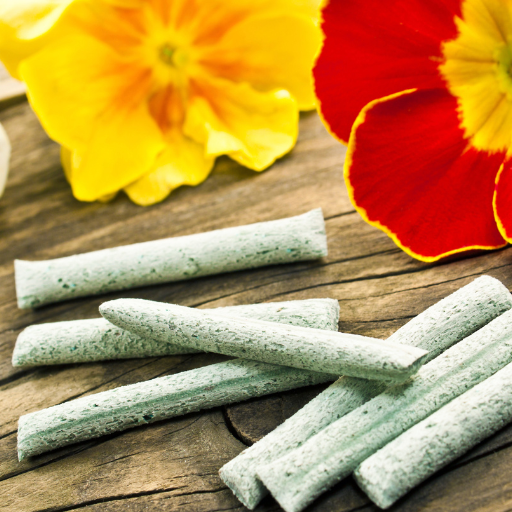
Fertilizer spikes have several advantages for trees, effectively improving their growth and health. They supply nutrients in a slow release manner directly to the root zone, ensuring that they are continuously nourished over time. This targeted delivery minimizes loss of nutrients by wash-off and cuts down on wastage. Moreover, fertilizer spikes do not require much work to be inserted into the earth unlike the conventional methods, making them easy to use. They help in enhancing soil texture as well as supporting strong root system development. Their convenience and efficiency make them an excellent choice for both residential and commercial tree care.
Advantages of slow-release nutrition
Slow-release nutrition offers different benefits which greatly affect plant performance and soil quality. One of these is that it helps plants receive constant nutrition over a long period of time because it allows nutrients to be available gradually. This ensures a continuous flow of nutrients throughout the growing season reducing the chances of nutrient leaching into the environment thereby protecting ground water from pollution.
Technically speaking, slow-release fertilizers often encase nutrients within polymer-coated granules or organic-based compounds that gradually dissolve based on changes in soil moisture content as well as temperature conditions. For example, sulfur-coated urea (SCU) and polymer-coated urea (PCU) are typical examples of slow-release technologies that offer uniform nutrient availability, thus enhancing nutrient utilization efficiency.
Additionally, it has been observed that when nutrients are released at a controlled pace there is no need for frequently applying fertilizers for growth optimization purposes which leads to resource conservation, simplifies gardeners’ and commercial growers’ efforts towards managing nutritional elements.Furthermore, there are several ways through which slow-release fertilizers can improve root development while enhancing soil structure through increasing microbial activity thus promoting long-term plant health.
This is what makes slow-release fertilizers valuable in sustainable agricultural and horticultural practices. They provide a consistent supply of efficient nutrition that reduces crop stress while promoting vigorous growth.
How to properly install fertilizer spikes
To ensure proper installation of a fertilizer spike, follow these steps for best results:
- Choose the Right Spikes: Select fertilizer spikes suitable for the particular kind of plant or tree you are fertilizing so that their nutrient composition matches the plants’ needs.
- Decide on the Placement: For trees and shrubs, place the spikes at the drip line. The roots usually take in nutrients from this area.
- Space out the Spikes Evenly: Distribution may be uniform depending on plant size and type, as indicated in the packaging instructions. In most cases, it is recommended to space them equally around the plant to create a uniform distribution of nutrients.
- Inserting the Spikes: Drive each spike into the soil with a hammer or mallet until it is completely underground. Most spikes should be driven at least two inches below ground level. Care must be taken not to break them while driving them into place.
- Thoroughly Water Around It: After installing, give lots of water to help dissolve spiked nutrients into the soil. Regular watering will facilitate the gradual release of nutrients.
- Follow Timing Recommendations: When applying fertilizer, follow the specific recommendations given on spike packaging. Spikes should usually be changed every three months or during the early stages of each growing season.
Abiding by these steps helps ensure constant supply of essential minerals which in turn leads to healthier growth and stronger root system development in your plants.
How do you fertilize newly planted trees?
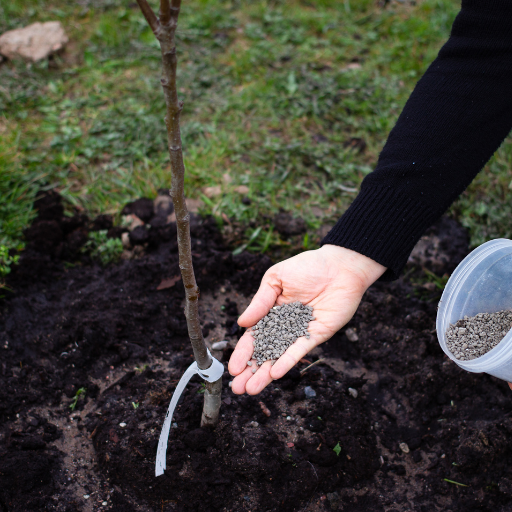
The purpose of this text is to explain the best ways to fertilize trees that have recently been planted and why it is important to do so. The first step in doing this is selecting a balanced, slow-release fertilizer specifically meant for new trees. Do not apply the fertilizer directly on or around the base of the tree trunk, as it may scorch roots. At most, work shallow into about four inches of soil so as to enhance nutrient absorption by plants. Soak the area thoroughly in order to activate the fertilizer and aid nutrient assimilation by plants. Watch carefully how your tree grows and repeat this process when necessary over recommended time periods indicated on package.
What New Trees Need
Newly planted trees require certain things in order for them to establish well and grow vigorously. Vital factors include watering properly, mulching, and good soil management practices. Initially, newly planted trees need constant water supply, whereby 10-15 gallons per week is a rule of thumb for about two years. Mulch should be placed around the base of a tree about 3-4” deep, reaching out up to the drip line with an aim to retain moisture in the soil while regulating temperature too. Care should be taken not to let the mulch touch the trunk since this can cause rotting. Adequate drainage coupled with well-aerated soils containing much organic matter suits new plantings best (Schmidt et al., p279). Regular inspection for pests and diseases as well as pruning dead or broken branches which may hinder growth are essential aspects thereof. This way they will develop an extensive root system alongside healthy foliage.
Best Fertilizers For Newly Planted Vegetation
When choosing appropriate fertilizers for new plantings, one should consider formulas containing balanced macronutrients such as nitrogen, phosphorus and potassium that are vital in root establishment and overall plant growth health (Harper et al., p13). According to top-rated sources here are some recommendations:
- Starter Fertilizers: These fertilizers are usually high in phosphorous, which is essential for root growth in new plantings. One example of such a fertilizer with a ratio of 10-20-10 N-P-K meaning that it contains 10% nitrogen, 20% phosphorus, and 10% potassium. With this higher level of phosphorus, the roots will become strong right from the start.
- Slow-Release Fertilizers: They deliver nutrients slowly, thereby reducing the chance of nutrient burn and providing an extended availability period (Berglund et al., p43). A good example would be a slow-release fertilizer with an N-P-K ratio of 14-14-14. This well-balanced combination allows plants to grow at a constant rate, thus eliminating frequent applications.
- Organic Fertilizers: Organic alternatives like manure or compost contain various micronutrients and improve soil structure. For example, compost can be fortified with certain mixtures, such as 3-2-3 N-P-K, which guarantees a continuous release of nutrients and enhances beneficial microbes’ actions within the soil.
The decision on which method to use should take into consideration specific needs of raw planting material, soil parameters as well as local climate conditions (Paulsen et al., p452). Moreover it is possible to achieve better growing results by following up responses made by plants towards enrichment using the said fertilizer formulas.
Adjusting Fertilizer Application According to Species and Soil
To optimize fertilizer application, it is important to consider the specific nutritional requirements for different types of plants as well as the inherent properties of the soil. Some species have special needs, like flowering plants, which require lots of phosphorous in order to have strong bloom production, while leafy vegetables need more nitrogen-rich formulas that can enhance their leaves’ growth. Likewise, pH, texture, and organic matter content are some soil characteristics that affect nutrient availability and uptake. A soil test will help determine what nutrients are already present and any deficiencies. Lime or sulfur may be added based on results from a soil test in order to adjust pH so as to ensure optimum conditions for nutrient absorption. Customizing fertilizer formulations and application timing according to species of plant crops alongside soil factors will increase crop health and productivity, ultimately leading to better fertilization practices.
How do you conduct a soil test for proper fertilization?
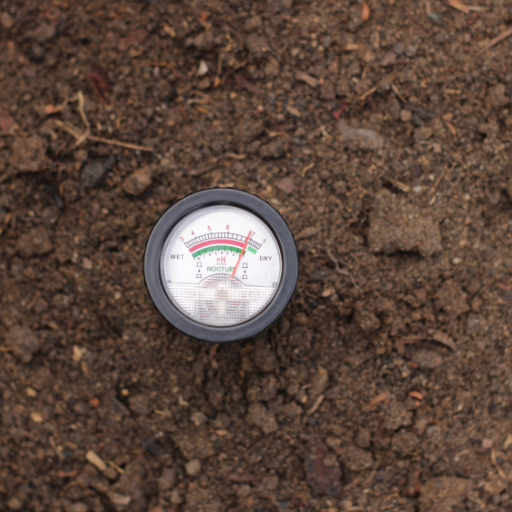
Several steps are involved in carrying out a soil test to ascertain proper fertilization. At first, assemble your tools which usually consist of soil probe or trowel, clean bucket and sample containers. Collect samples of soil from the root zone of plants about 6 to 8 inches deep. As such it is advisable to take numerous samples throughout the farm or garden. Take these samples to a clean bucket, where they should be mixed well after removing any stones and roots. Then obtain a pint of this mixture put it inside a bag/ container that can be acquired from a laboratory for testing/ extension service locally.
A label with relevant details like field location and type of plants would then be made on the sample before sending it to the soils testing lab as guided by their instructions for submission. They will send you back the results once they are through analyzing your soil in detail which will show nutrient levels, pH values, and suggestions on how you can amend your soil or fertilizers that suits your requirements. Due to this data-driving approach, fertilization practices have become more accurate because they are tailored towards optimal plant health as well as productivity.
Steps for Testing & Analyzing Soil Composition
- Collect Soil Samples: a combination of various locations within the garden area or field where samples should be taken using either a soil probe or trowel at around six up to eight inches below surface level.
- Prepare Sample: Mix thoroughly in a bucket all visible debris such as rocks, roots or organic matter found in the soil while homogenizing. From there into another clean sample container/bag one should pour about one pint using proper packaging provided by approved laboratories.
- Label Sample: Make sure you properly indicate on each bottle information like; field site, date when sample was collected and types of crop being grown so that right analysis can be done with good recommendations given.
- Submit To Laboratory: Labelled soils must be sent off by post (mail) for examination by a good soil test laboratory. The submission of the sample will require you to follow specific guidelines particularly regarding how it should be packaged and sent.
- Interpret Results: Once you receive the soil test report, examine the findings which normally include soil pH levels, amounts of nutrients as well as rate of organic matter. It also provides suggestions for suitable fertilizers and amendments needed to develop healthy soils that can support multiple crops.
Through step-by-step collection and evaluation of samples taken from the ground, an accurate and informed approach to soil management and fertilization can be taken, enhancing plant healthiness and productivity.
How to interpret the results of soil tests for correct fertilizer application
Interpreting soil test results is very important in determining the appropriate use of fertilizer. First, you need to look at the soil pH stated in the report; it shows if your soil is acidic or alkaline. Many plants grow well under a pH range of 6.0-7.0, and therefore, adjustments may be needed where your soil does not fall within these limits. Then, evaluate macronutrient levels including nitrogen (N), phosphorous (P) and potassium (K) that are often abbreviated as NPK on fertilizer bags. The amounts required for rectifying any deficiencies will be provided by the soil test report’s specific recommendations. In addition, think about other nutrients such as secondary nutrients and micro-nutrients whose quantities are usually smaller in relation to those mentioned earlier, but they are equally significant for plant health like calcium, magnesium, and iron, respectively. By following these custom-made directions, you can ensure that you are using fertilizers that have been designed to meet the nutritional demands of your crops, hence fostering healthy growth and yielding optimally.
Frequently Asked Questions (FAQs)
Q: Why is fertilizing trees important?
A: Fertilizing trees is important to ensure they get the nutrients they need for healthy growth. Adequate nutrition helps trees resist diseases, pests, and environmental stresses.
Q: How do you determine the amount of fertilizer to apply to trees?
A: The amount of fertilizer to apply depends on the tree’s size and the soil’s nutrient content. Generally, one pound of actual nitrogen per 1,000 square feet is a common recommendation. Always read the label and follow guidelines to avoid over-fertilization.
Q: What type of fertilizer would be best for an apple tree?
A: For apple trees, a balanced fertilizer with a higher percentage of nitrogen is often recommended. Phosphorus fertilizer can also help promote fruit development, especially if the soil lacks this nutrient.
Q: When is the best time to fertilize ornamental trees?
A: The best time to fertilize ornamental trees is in early spring before the growing season starts. This ensures that the trees use the nutrients effectively as they begin new growth.
Q: How can I apply the fertilizer to the soil around the tree effectively?
A: Fertilizer can be applied through several methods like broadcasting it evenly around the tree, using a root feeder for deep root feeding, or through an injection of liquid fertilizer. It’s essential to water the area well after applying the fertilizer to help it penetrate the soil.
Q: Can I use water soluble fertilizer for trees?
A: Water soluble fertilizer is an excellent choice for trees because it can be quickly absorbed by the roots. This type of fertilizer can be especially beneficial for young trees or in situations where a rapid response is needed.
Q: Should I fertilize trees growing in the lawn differently from isolated ones?
A: Yes, trees growing in lawns may require different fertilization because lawn grass often competes with trees for nutrients. Ensuring that the fertilizer applied benefits both the lawn and the tree is crucial without over-fertilizing one over the other.
Q: How much fertilizer is needed around trees annually?
A: The amount of fertilizer needed varies depending on the tree’s size, age, and soil condition. Typically, it’s recommended to apply 1 to 2 pounds of nitrogen per 1,000 square feet per year. Monitoring the tree’s growth and health is essential for adjusting the fertilizer program accordingly.
Q: Are there any risks of fertilizing trees too much?
A: Yes, over-fertilizing can lead to excess nutrient build-up in the soil, which can harm the tree or surrounding plants. Symptoms of over-fertilization include leaf burn, green algae growth, and excessive vegetative growth with poor root development. Always follow guidelines to avoid applying fertilizer in large amounts.
Q: Should I fertilize trees newly planted in the garden?
A: When planting new trees, it’s typically advised to wait a year before fertilizing. This allows the young tree to establish its roots first. If you notice the tree gets weak or shows poor growth after the first year, you can then start a light fertilizer program.






